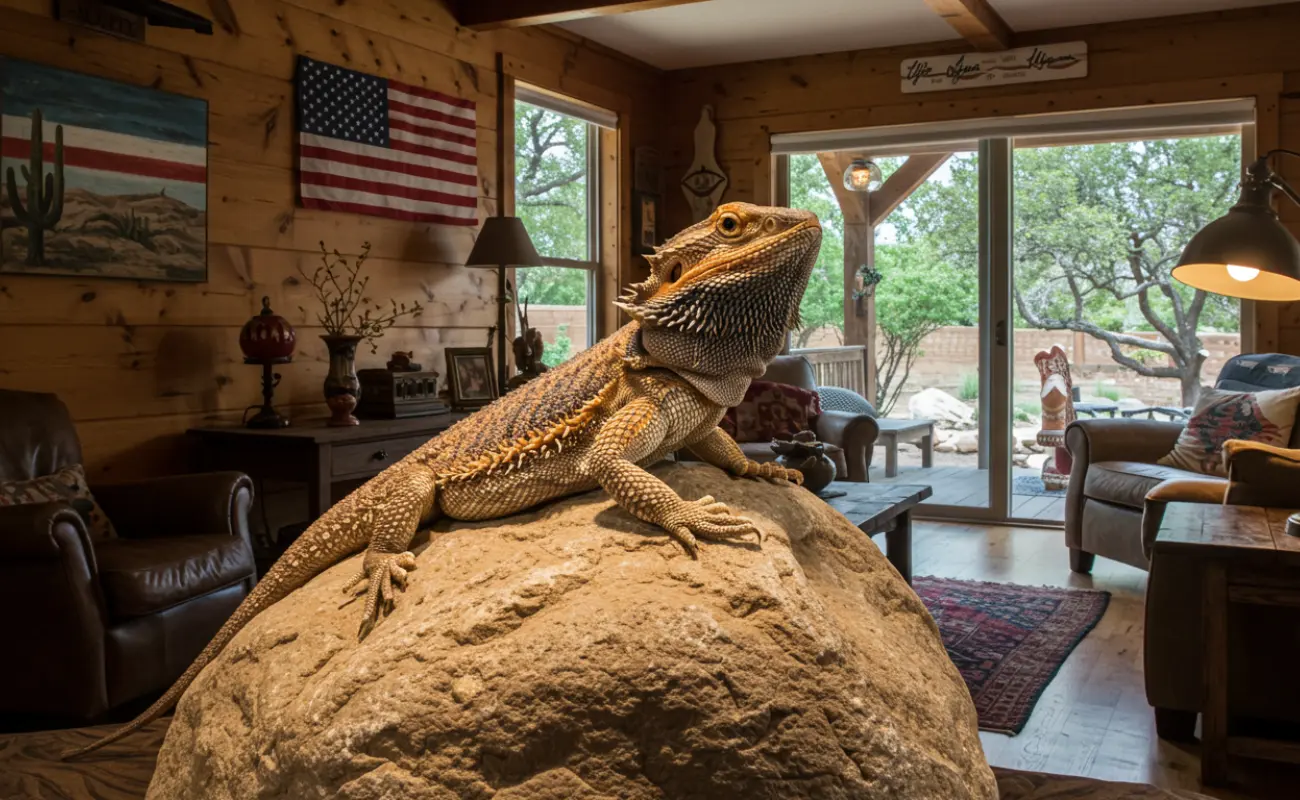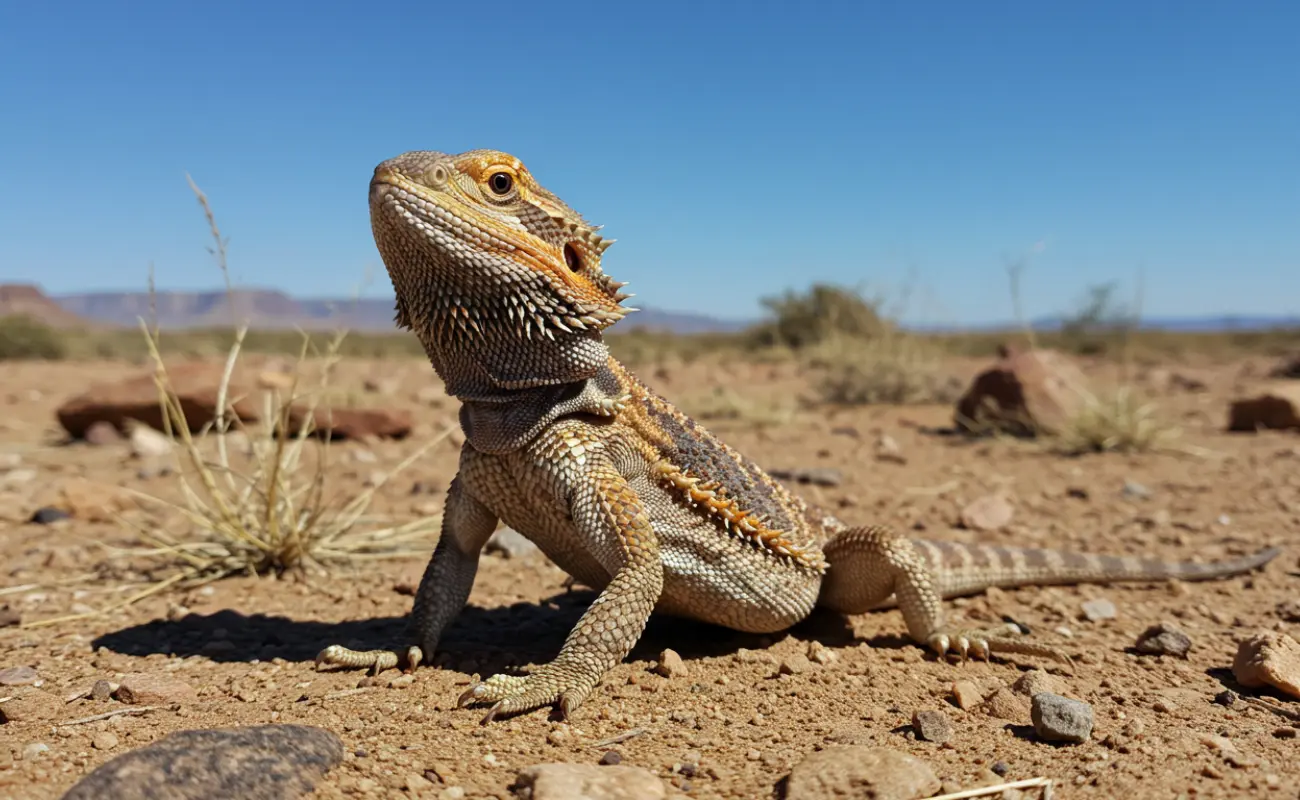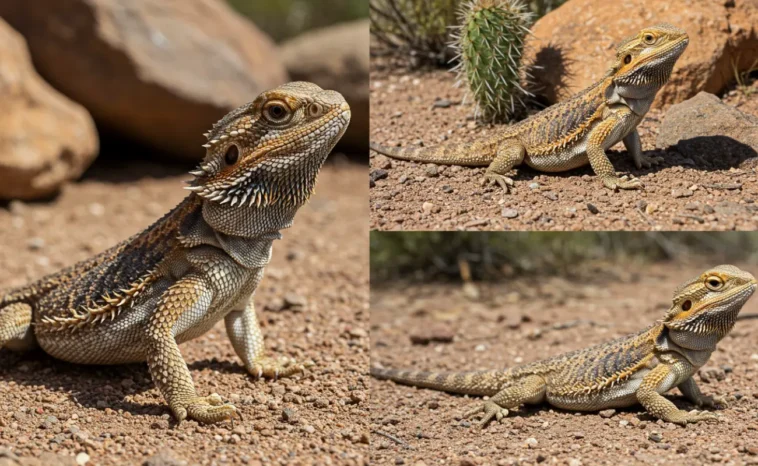When it comes to owning a bearded dragon, one of the most important decisions you’ll make is choosing between a male and female bearded dragon. Understanding the differences between these two genders is crucial for providing the best care and ensuring a happy, healthy pet. While both male and female bearded dragons make great companions, there are distinct variations in behavior, size, and care needs that could influence your decision.
In this post, we’ll dive into the bearded dragon gender differences and explore how these affect bearded dragon care. Whether you’re debating the choice of a male vs female bearded dragon, it’s essential to know what to expect from each gender, as it can impact everything from their temperament to their habitat requirements. By understanding these key gender differences, you can make a more informed decision and provide the optimal care for your new reptilian friend.
Understanding Male and Female Bearded Dragons
What is the Difference Between Male and Female Bearded Dragons?
When deciding between a male and female bearded dragon, understanding the key differences between the genders is crucial. While both male and female bearded dragons share many common characteristics, they also exhibit several distinct physical and behavioral traits that set them apart.
Physical Differences Between Male and Female Bearded Dragons
One of the most noticeable differences between male and female bearded dragons is their size. Male bearded dragons are generally larger, reaching lengths of up to 24 inches, while females typically range from 18 to 20 inches. This size discrepancy can be particularly important if you have limited space in your home or want a smaller pet.
Another prominent physical feature is the beard. The beard of a male bearded dragon is typically larger and darker, especially when they are excited or feel threatened. This darkening serves as a display of dominance or aggression. In contrast, female bearded dragons tend to have smaller, lighter-colored beards, which are less pronounced. The males also have larger heads, which is an indicator of their overall size and strength.
Females, on the other hand, have smaller heads and a more slender body shape compared to males. One of the most distinctive features in females is the hemipenal bulge, which is a slight bump located near the base of the tail. This bulge is absent in males, whose tail base is generally thicker and more pronounced due to the presence of hemipenes (reproductive organs).
Behavioral Traits of Male vs Female Bearded Dragons
In terms of behavior, male bearded dragons are known for their more territorial and dominant nature. They often engage in head-bobbing, a behavior where they rapidly nod their heads up and down, particularly when they feel threatened or are trying to assert dominance over other males. This behavior is most often seen during the breeding season, although it can occur at any time. Males are also more likely to exhibit aggression towards other males and might be more active during the day.
On the other hand, female bearded dragons tend to be more docile and less territorial. While they may engage in occasional head-bobbing, it’s not as frequent or intense as in males. Female bearded dragons are often more social and less likely to exhibit aggressive behavior. However, they can become territorial when it comes to protecting their nesting sites or during the breeding season.
Another behavioral distinction is that females are more prone to egg-laying. Even without the presence of a male, females will still lay eggs, which can sometimes lead to behavioral changes, such as nesting or burrowing. This is an important factor to consider when choosing a male vs female bearded dragon, as it may require additional care and attention.

Care and Maintenance for Male and Female Bearded Dragons
Feeding and Diet Differences by Gender
When it comes to feeding and diet, male and female bearded dragons don’t have drastically different nutritional needs, but there are some nuances worth considering. Generally, both genders require a well-balanced diet that includes a mix of vegetables, fruits, and live insects. However, there are certain factors that might influence their diet based on gender.
Male bearded dragons tend to have a larger appetite due to their larger size and higher activity levels. They are more likely to consume more protein-rich food such as crickets, superworms, and roaches. During the breeding season, males may experience an increased appetite as their energy levels fluctuate due to mating behavior. This means you may need to adjust the quantity of food to match their activity levels.
Female bearded dragons, on the other hand, might require a slightly different diet, especially if they are in their breeding or egg-laying season. Female dragons may become more focused on calcium-rich foods to support egg production. Foods like collard greens, mustard greens, and dandelion greens are essential for ensuring they receive the necessary calcium for healthy eggs. Additionally, females that are egg-bound (unable to lay eggs) may require additional hydration and a slightly adjusted diet to help with their condition.
While both genders benefit from a healthy mix of fruits and vegetables, be sure to tailor the diet according to their unique needs, particularly during breeding seasons or when laying eggs.
Habitat Requirements for Male and Female Bearded Dragons
While the basic habitat requirements for both male and female bearded dragons are quite similar, there are some subtle differences to consider based on their behavior and size.
Male bearded dragons, being larger and more territorial, may require a slightly larger enclosure to accommodate their space needs. A 40-gallon tank or larger is recommended for males, especially if you’re keeping them alone. Males may also become more aggressive toward other males, so it’s crucial to ensure their environment allows them to establish their space without interference.
Female bearded dragons are usually smaller and less territorial, so they can often thrive in a smaller tank compared to males. However, if they are kept with other females or have the opportunity to breed, you may need a larger space to ensure they have enough room to move around comfortably. Additionally, females may need a specific area within their habitat for nesting when they are ready to lay eggs.
Both genders benefit from a dry, desert-like environment with plenty of hiding spots and climbing branches. Providing substrates like sand or reptile carpet, along with UVB lighting and heat lamps, is essential for both male and female bearded dragons.
Lighting and Temperature Needs for Bearded Dragons
The lighting and temperature needs for both male and female bearded dragons are essentially the same, as both require the right balance of heat and UVB light to thrive. However, their activity levels may influence their behavior in response to lighting and temperature.
Bearded dragons are ectothermic, meaning they rely on external heat sources to regulate their body temperature. Both males and females need a basking spot with temperatures around 95°F to 110°F during the day, and a cooler side of the tank that stays between 75°F to 85°F. At night, the temperature can drop to around 65°F to 70°F.
In terms of UVB lighting, both male and female bearded dragons require UVB lights to help synthesize vitamin D3, which is necessary for calcium absorption and overall health. Ensure the UVB light is strong enough and positioned correctly to cover the basking area. The light should be replaced every six months to maintain optimal UVB output.
During the breeding season, males may be more active and need more exposure to light and heat to support their increased energy levels. On the other hand, females may need a more consistent temperature range, particularly if they are laying eggs, to prevent stress and ensure healthy egg development.
Choosing the Right Bearded Dragon for Your Lifestyle
Considerations for First-Time Bearded Dragon Owners
For first-time bearded dragon owners, choosing the right gender is a crucial decision that can affect the ease of care and the overall experience. Both male and female bearded dragons are relatively easy to care for compared to other exotic pets, but there are subtle differences that should be taken into account.
First-time owners may find it easier to start with a female bearded dragon since they tend to be more docile and less territorial than males. Females are also smaller, making them a more manageable size for beginners with limited space. Additionally, female bearded dragons are less likely to exhibit aggressive behaviors, such as head-bobbing or territorial displays, which may make handling easier.
On the other hand, male bearded dragons tend to be more active and may require more attention, especially if they’re kept with other males. They also may engage in more aggressive behavior during the breeding season, making them slightly more challenging for a first-time owner. However, if you’re looking for a bearded dragon with a larger presence and are prepared for a more active pet, a male bearded dragon can make a great companion as well.
Male vs Female: Which One Makes a Better Pet?
The question of whether a male or female bearded dragon makes a better pet depends largely on personal preference and what you’re looking for in a pet. Male bearded dragons are known for their larger size, more prominent beards, and sometimes more energetic personalities. If you’re looking for a bearded dragon that will show a bit more personality and display active behavior, a male bearded dragon could be a great choice.
In contrast, female bearded dragons tend to be more laid-back and easier to handle. Their smaller size and calmer temperament may make them a better fit for first-time owners or those who prefer a more docile pet. They’re also less likely to exhibit dominant behaviors, which could make them a better choice for homes with other pets or young children.
Compatibility with Other Pets and Family Members
Both male and female bearded dragons can live peacefully in a household with other pets, but there are important considerations to ensure a safe and harmonious environment. Male bearded dragons can sometimes be more territorial, especially when housed with other males. This behavior may lead to aggression, making it essential to house males individually or with careful consideration of other species in the same enclosure.
Female bearded dragons, due to their generally calmer demeanor, tend to get along better in multi-pet households. However, if you plan to house multiple bearded dragons together, it’s always important to monitor their interactions, as even females can become territorial during the breeding season or when laying eggs.
As for family compatibility, female bearded dragons are often easier to handle and less likely to exhibit aggressive behaviors around children. Males, with their larger size and potential for more active displays, may require a bit more attention to ensure they are comfortable in a family environment. Both genders can make wonderful family pets, but it’s important to consider the temperament of your specific bearded dragon and the dynamics of your home.

Bearded Dragon Breeding and Gender-Specific Care
Breeding Male and Female Bearded Dragons
Breeding male and female bearded dragons requires careful planning and attention to ensure the health and well-being of both the dragons and their offspring. Male bearded dragons will typically become more active and territorial during the breeding season, exhibiting behaviors such as head-bobbing and chasing. When breeding, it’s essential to have a proper enclosure with enough space for both the male and female. The female will need a safe and comfortable area to lay eggs, which may require adding a nesting box or digging area to the habitat. Breeding should only be considered if you are fully prepared to care for the eggs and newborns.
Health Considerations for Male and Female Bearded Dragons
The health needs of male and female bearded dragons are similar, but there are some gender-specific health concerns. Females are more likely to suffer from egg-binding, where eggs become stuck inside their body, which can be life-threatening. It’s essential to provide calcium-rich foods and ensure they have a nesting area to dig. Males, on the other hand, may experience issues related to aggression and territorial behavior, which can lead to stress or injuries. Regular checkups with a reptile vet are important for both genders to monitor their health.
How to Manage Gender-Specific Care for Your Bearded Dragon
Managing gender-specific care for your bearded dragon involves adjusting your approach based on their behavior and needs. For females, focus on ensuring they have access to calcium and a safe space to lay eggs. During the breeding season, be aware of hormonal changes that can affect their behavior. For males, providing extra space and monitoring for signs of aggression is key. Regardless of gender, both male and female bearded dragons require proper UVB lighting, a balanced diet, and a habitat that mimics their natural environment to thrive.
Conclusion
Choosing between a male and female bearded dragon is a personal decision that depends on your preferences, living situation, and pet care goals. Male bearded dragons tend to be larger, more active, and sometimes more territorial, making them a great choice for experienced owners who enjoy a more dynamic pet. On the other hand, female bearded dragons are generally smaller, more docile, and easier to manage, which makes them ideal for first-time owners or those seeking a more laid-back companion.
Ultimately, both genders can make fantastic pets, and the best choice for you will depend on your specific needs and lifestyle. Consider factors like temperament, space, and the level of care you’re prepared to provide when making your decision.
We’d love to hear about your personal experiences with male and female bearded dragons! Have you noticed any unique traits or challenges based on their gender? Feel free to share your stories and tips in the comments below — your insights could help others make the right choice.
Additionally, if you’re looking to deepen your knowledge of bearded dragon care, check out our other related posts on topics such as creating the perfect habitat, providing optimal nutrition, and understanding bearded dragon health. You can also learn more about bearded dragon bathing temperature in our post: What Temperature Should I Bathe My Bearded Dragon In?. Keep exploring to ensure your bearded dragon has the best care possible!




